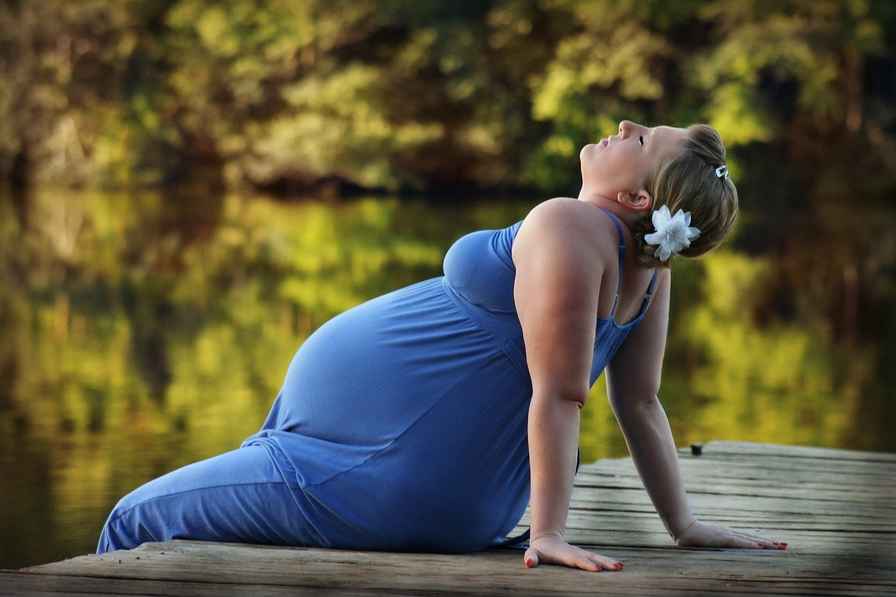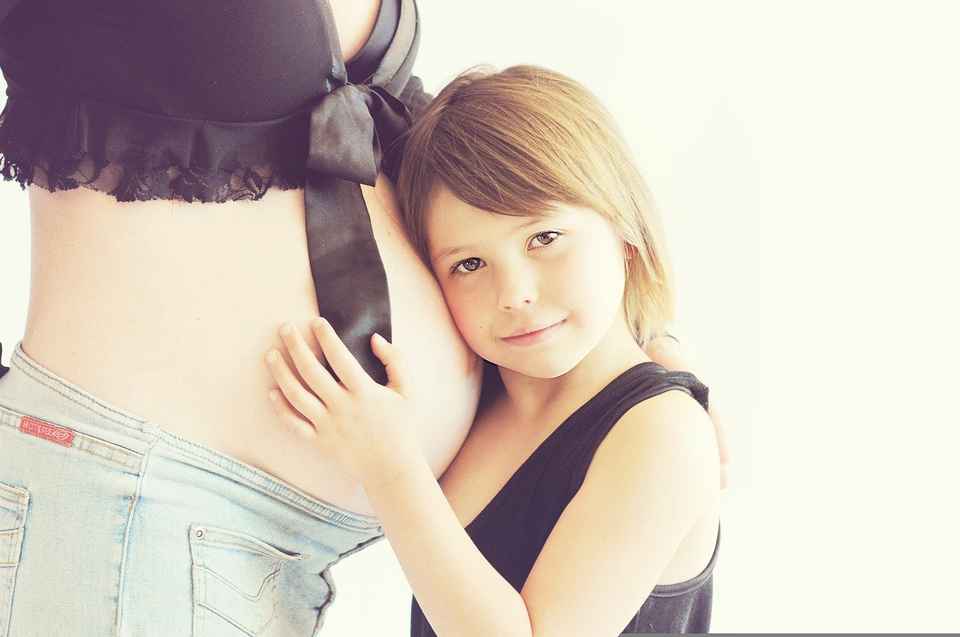Many factors contribute to a smooth pregnancy experience, and torso size is one of them. While it is not a definitive factor, it can influence certain aspects of pregnancy. In this blog post, we will discuss the advantages and disadvantages of having a short torso versus a long torso during pregnancy. We hope this information helps you make informed choices for yourself and your growing baby!
Bigger bump vs. smaller bump
Pregnancy bump size can vary due to several factors, such as the position of your baby in the womb, the shape of your body, and torso length. Generally, women with short torsos tend to carry their baby lower and have a more pronounced bump, as the baby has less vertical space to grow. Conversely, women with long torsos may carry their baby higher and have a less noticeable bump due to the additional vertical space for the baby to grow.
Regardless of bump size, there is no right or wrong way to be pregnant, as each pregnancy is unique and influenced by various factors.
Does torso size really matter?
While pregnancy is an incredible time in a woman’s life, it can also bring about uncertainties. One common concern among expectant mothers is whether their torso size will affect the health of their pregnancy. However, the impact of torso size on pregnancy outcomes remains inconclusive.
Some experts argue that a short torso may make it more challenging for the baby to move into the birth canal, while others believe that a long torso could increase the mother’s back pain. Nevertheless, each pregnancy is unique, and the expectant mother’s circumstances should be considered when evaluating potential issues related to torso size.
The reassuring news is that most women can have a healthy pregnancy regardless of their torso size. It is crucial not to stress excessively over this particular aspect, as there are more significant factors to focus on while preparing for your baby’s arrival.
Other factors affecting bump size

In essence, torso length does not appear to be the primary determinant of bump size. However, it may influence when someone begins to show a baby bump. Individuals with short torsos might start showing earlier due to the proximity of their stomachs to the center of their bodies. This effect can be particularly noticeable if they are carrying twins or multiples.
Conversely, those with long torsos may not start showing until later in their pregnancy, as their stomachs are situated farther from the center of their bodies. Thus, while torso length is not necessarily a determining factor in bump size, it can impact the timing of when someone begins to show.
There are several additional factors to consider regarding bump size:
- Genetics: Your genetic makeup can influence the size and shape of your bump, as it determines factors like body structure and fat distribution.
- Weight gain: The amount of weight gained during pregnancy can affect the size of your bump. A balanced diet and regular exercise are essential for maintaining a healthy weight throughout pregnancy.
- Baby’s position: Your baby’s position in the womb can influence the appearance of your bump. Babies can change positions frequently, causing the bump size and shape to vary.
- Amniotic fluid volume: The amount of amniotic fluid surrounding the baby can also affect bump size. An excess or shortage of amniotic fluid can cause the bump to appear larger or smaller.
- Number of previous pregnancies: Women who have had previous pregnancies may show sooner, as their abdominal muscles have been stretched before.
By understanding these factors, expectant mothers can better gauge the changes in their bump size throughout pregnancy and maintain a healthy lifestyle to support their growing baby.
Genetics and Bump Size
Although the average pregnancy bump measures about 22 inches, there is considerable variation among women. Some may have small, discreet bumps early on, while others experience significant growth throughout their pregnancy. So, what factors contribute to this variation?
Recent research suggests that genetics may play a role in determining bump size. Specifically, women with short torsos relative to their height are more likely to have larger bumps due to the limited space available for the baby to grow vertically.
While these findings are still preliminary, they offer an intriguing insight into the complex factors that contribute to pregnancy bump size. Understanding the role of genetics can help expectant mothers better appreciate the variations in bump size and shape, as well as the uniqueness of their pregnancy journey.
The Role of Fitness in Pregnancy Bump Size
The common belief that a woman’s body type determines the size of her bump during pregnancy has been questioned by recent research. Studies have found no direct correlation between body type and bump size.
Instead, the size of a woman’s bump is influenced by various factors, including the length of her torso. Women with short torsos may have more noticeable bumps, as the baby has less vertical space to grow. Conversely, women with long torsos may have less prominent bumps due to the increased vertical space available.
However, it is essential to note that torso length is just one factor influencing bump size, and the difference may not be significant. Other factors, such as genetics, baby’s position, and amniotic fluid volume, can also contribute to bump size variations.
Maintaining a healthy lifestyle and staying fit during pregnancy can help expectant mothers support their growing baby and better adapt to the changes in their bodies. So, rather than focusing on whether a short or long torso will affect bump size, prioritize overall health and well-being for a smoother pregnancy experience.
First vs. Second Pregnancy Bump Size
The size of a pregnancy bump varies from one woman to another, as each individual’s body is unique. While there is no definitive answer to whether the bump size differs between first and second pregnancies, some experts believe that a woman’s pregnancy history may influence the size of her bump.
Research suggests that women experiencing their second pregnancy may have smaller or less noticeable bumps. This could be due to the abdominal muscles having already been stretched during their first pregnancy, allowing for a more flexible and accommodating space for the baby to grow.
It is essential to remember that each pregnancy is different, and various factors can influence bump size, such as genetics, baby’s position, and amniotic fluid volume. Therefore, it is crucial to focus on maintaining a healthy lifestyle and attending regular prenatal checkups, regardless of whether it is your first or second pregnancy.
Advantages of long torso pregnancy
There are several potential benefits to having a long torso during pregnancy:
- Efficient nutrient processing: A long torso may facilitate better nutrient processing, contributing to a healthier pregnancy for both the mother and the baby.
- Reduced risk of pregnancy complications: Women with long torsos may be less susceptible to certain pregnancy complications, such as preeclampsia and gestational diabetes.
- Larger babies and lower risk of premature birth: A long torso can provide more space for the baby to grow, potentially resulting in larger babies and a decreased risk of premature birth.
However, it is essential to remember that these potential benefits may not apply to every woman with a long torso, as each pregnancy is unique and influenced by various factors. If you’re considering the impact of having a long torso on your pregnancy, consult your healthcare provider to learn more about the potential risks and benefits tailored to your specific situation. They can offer personalized guidance and support throughout your pregnancy journey.
Disadvantages of long torso pregnancy
While having a long torso during pregnancy may offer some benefits, there are also potential drawbacks to consider:
- Clothing challenges: Finding comfortable and supportive maternity clothing can be more difficult for women with long torsos, as many maternity clothes are designed for shorter torsos. This may result in discomfort and self-consciousness for expectant mothers with longer torsos.
- Sleep discomfort: A long torso can make finding a comfortable position challenging, potentially leading to sleepless nights and fatigue during pregnancy.
- Potential delivery complications: Women with long torsos may experience increased difficulty in delivering vaginally, which could heighten the risk of complications during childbirth.
It is crucial for expectant mothers with long torsos to discuss these potential risks and benefits with their healthcare provider. By doing so, they can make informed decisions about their pregnancy and receive personalized advice on how to best navigate any potential challenges related to their torso length.
Advantages of short torso pregnancy
Short torso pregnancy comes with several advantages:
- Reduced back pain: With the baby positioned closer to the spine, there may be less strain on the back muscles, potentially helping to prevent back pain.
- Lower risk of certain complications: Short torso pregnancy may reduce the risk of complications such as placental abruption and preeclampsia.
- Quicker and easier delivery: With less distance for the baby to travel through the birth canal, short torso pregnancies often result in faster and smoother deliveries, which can be considered safer for both mother and child.
Disadvantages of short torso pregnancy
Despite the advantages, there are some disadvantages to short torso pregnancy:
- Breathing difficulties: As the baby presses on the lungs, expectant mothers with short torsos may experience difficulty expanding their lungs and getting enough oxygen.
- Discomfort: Due to limited space for the baby to move, short torso pregnancies can cause more pressure on the ribs and other parts of the body, leading to discomfort.
- Increased risk of preeclampsia: Short torso pregnancies may raise the risk of preeclampsia, a condition characterized by high blood pressure during pregnancy.
While short torso pregnancy has its challenges, many women still have healthy pregnancies and babies. It is crucial to consult with your healthcare provider if you have any concerns, as they can offer personalized advice and support throughout your pregnancy journey.
Short torso vs. long torso pregnancy

Short torso and long torso pregnancies are frequently discussed among expectant mothers. While there are some differences between the two, both types of pregnancies can be healthy and successful.
Short torso pregnancies can be uncomfortable, as the baby often pushes against the ribs and other organs, causing shortness of breath and other discomforts. However, it is essential to note that shortness of breath is common in both short and long torso pregnancies and should not be used to determine your pregnancy type.
Long torso pregnancies tend to be easier on the back and hips, as the weight is distributed more evenly. However, this can also lead to more frequent Braxton Hicks contractions.
Ultimately, both short and long torso pregnancies are normal and healthy experiences. There is no need to worry about falling into either category. Instead, focus on maintaining a healthy lifestyle, attending regular prenatal checkups, and discussing any concerns with your healthcare provider to ensure a smooth pregnancy journey for you and your baby.
FAQs
What is considered a long torso?
A long torso is typically determined by measuring the distance between the hip bone’s top and the ribcage’s bottom. Women with a longer measurement in this area are considered to have a long torso. During pregnancy, a long torso can provide more space for the baby to grow, which can be beneficial in terms of comfort and reducing certain complications.
Although a long torso pregnancy has some advantages, it can also pose challenges, such as finding maternity clothing that fits well or experiencing extra weight strain on the back and hips. Nonetheless, with proper prenatal care, most women with a long torso can have a healthy pregnancy and baby.
Is pregnancy easier with a long torso?
Pregnancy experiences can vary greatly among women, regardless of torso length. However, a long torso can provide certain advantages during pregnancy, such as reduced back pain and more even weight distribution. On the other hand, women with long torsos might face challenges in finding suitable maternity clothing or comfortable sleeping positions. Ultimately, each pregnancy is unique, and torso length is only one of many factors that can impact the experience.
What should I wear if I have a long torso?
If you have a long torso, consider clothing that complements your body shape. Opt for styles such as high-waisted pants or skirts that elongate the legs and create balance. For maternity wear, choose pieces that provide ample support and comfort, such as well-fitting maternity bras and tops with ruching or side ties for adjustability. By focusing on proportion and comfort, you can find the perfect outfit for your long torso.
Does a short torso affect pregnancy?
There is no definitive answer as to whether a short torso significantly affects pregnancy. While some women with short torsos may experience more back pain or discomfort due to the baby’s positioning, this is not universally true. Ultimately, individual factors, such as a woman’s overall health, fitness, and medical history, play a more significant role in determining the course of pregnancy.
How do you shorten the appearance of a long torso?
Consider clothing choices that balance your proportions to create the illusion of a shorter torso during pregnancy. Wear tops that sit at or just below the waistline, and opt for empire-waist dresses that emphasize the bustline. Ensuring you have a well-fitting, supportive bra can also help lift and support your breasts, making your torso appear shorter. Experiment with different styles to find what works best for your body shape.
Conclusion
The length of a woman’s torso can impact her pregnancy experience in various ways, with both advantages and challenges for those with long and short torsos. However, it is essential to remember that each pregnancy is unique, and factors such as overall health, fitness, and medical history play a more significant role in determining pregnancy outcomes.
If you have concerns about your torso length and its potential impact on your pregnancy, consult your healthcare provider for personalized guidance and support.
